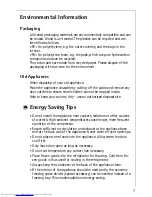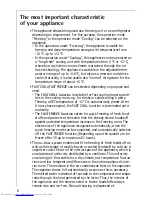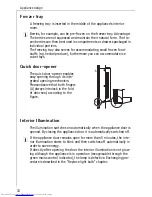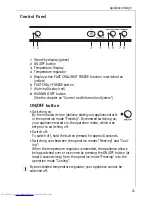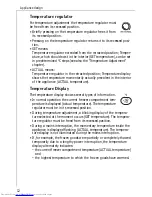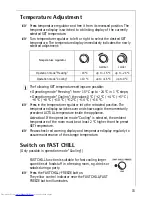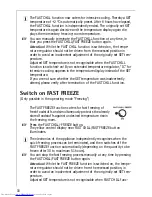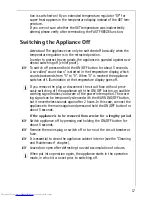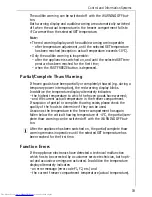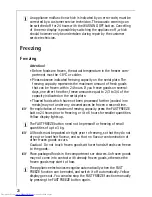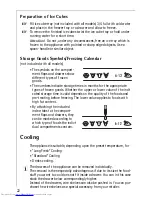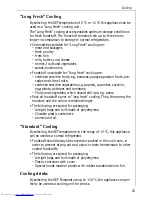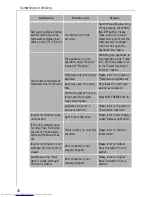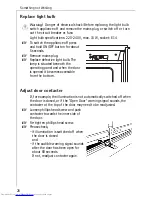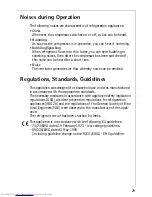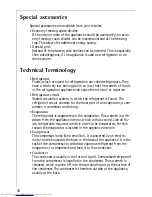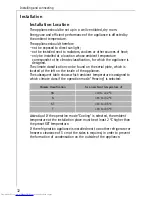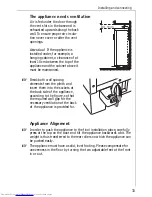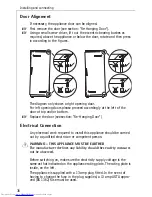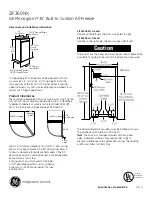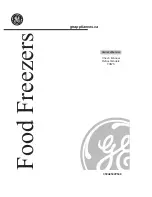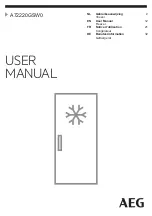
Freezing
21
• To allow storage of awkward freezing foodstuff, the drawers of the
appliance are individually removable. They can be stacked in the one
lying below.
• The following are suitable for packing foodstuffs to be frozen:
– freezing bags and foils made of polyethylene;
– special tins for frozen food;
– aluminium foil, extra strong.
• The following are suited for sealing bags and wraps:
plastic clips, rubber bands or adhesive tape.
• Press air out of bags and wraps before sealing, because air encour-
ages drying of frozen goods.
• Make flat packages, because these freeze more quickly.
• Do not fill cans for frozen goods to the brim with liquid or paste-like
goods, because liquids expand during freezing.
3
Note for inspection authorities:
Batch plans for the determination of freezing performance or warm-up
time can be requested directly from the manufacturer.
Frozen Storage
Attention!
Before initial loading of the freezer compartment with pre-
viously frozen goods, the required storage temperature of -18°C must
be reached.
• Load freezer only with packaged frozen goods, so that they do not
dry out or lose their flavour, and so that no flavour contamination of
other frozen goods can occur.
• Please observe maximum storage times and expiry dates of frozen
goods.
2
In so far as possible store frozen goods separately according to type in
compartments and drawers. Some models are provided with index-tabs
which can be attached to compartment doors and drawers. In order to
identify the contents of individual compartments, attach the index-
tabs so that they cover the storage goods symbols (see section:
"Storage Goods Symbols/Freezing Calendar"). Thus, you will have a bet-
ter overview, avoid opening the door for a long time and save power.
3
From a food safety point of view, -18 °C is deemed sufficient as cold
storage temperature.

